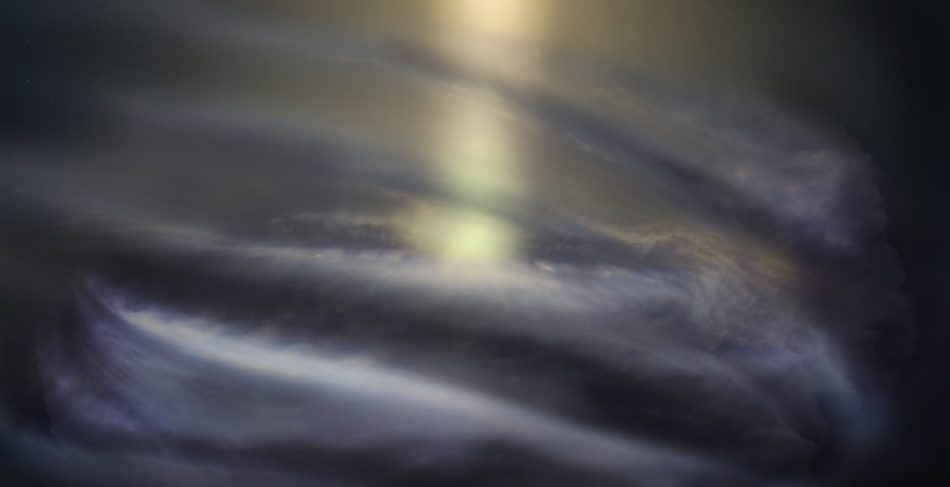Jun 6 2019
After several decades of research work, astronomers have created a better picture of the crowded and chaotic neighborhood around the supermassive black hole located at the center of the Milky Way.
 Artist impression of a ring of cool, interstellar gas surrounding the supermassive black hole at the center of the Milky Way. New ALMA observations reveal this structure for the first time. (Image credit: NRAO/AUI/NSF; S. Dagnello)
Artist impression of a ring of cool, interstellar gas surrounding the supermassive black hole at the center of the Milky Way. New ALMA observations reveal this structure for the first time. (Image credit: NRAO/AUI/NSF; S. Dagnello)
The galactic center of Milky Way is located roughly 26,000 light-years from Earth. The mass of the supermassive black hole there, called Sagittarius A* (A “star”), is 4 million times that of our Sun.
Presently it is known that this region is filled with interstellar dust clouds, roving stars, and a large reservoir of phenomenally hot and relatively colder gases. It is expected that these gases will orbit the black hole in a vast accretion disk extending a few tenths of a light-year from the event horizon of the black hole.
However, to date, astronomers could image only the tenuous, hot portion of this accreting gas flow, forming an almost spherical flow and exhibiting no evident rotation. It is predicted to have a blistering temperature of 10 million degrees Celsius (18 million degrees Fahrenheit), or nearly two-thirds the temperature found at the core of the Sun. At such a high temperature, the gas vigorously glows in X-ray light, enabling it to be investigated by space-based X-ray telescopes, down to the scale of nearly one-tenth of a light-year from the black hole.
Apart from this hot, glowing gas, earlier observations with millimeter-wavelength telescopes have come across a huge store of relatively cooler hydrogen gas (nearly 10,000 °C, or 18,000 °F) within a few light-years of the black hole. The contribution of this cooler gas to the accretion flow onto the black hole was obscure earlier.
Despite the fact that the galactic center black hole is comparatively quiet, the radiation surrounding it is sufficiently strong to make hydrogen atoms to continually lose and recombine with their electrons. Such recombination generates a distinctive millimeter-wavelength signal, with the potential to reach Earth with very little losses along its way.
Thanks to the remarkable sensitivity and powerful potential of the Atacama Large Millimeter/submillimeter Array (ALMA) to detect very fine details, it could detect this faint radio signal and generate the first-ever image of the cooler gas disk at only about a hundredth of a light-year away (or nearly 1000 times the distance from the Earth to the Sun) from the supermassive black hole. These observations allowed the astronomers not just to map the location and but also to track the motion of this gas. The scientists have predicted that the amount of hydrogen in this cool disk is nearly one-tenth the mass of Jupiter, or one ten-thousandth of the mass of the Sun.
The astronomers mapped the shifts in wavelengths of the radio light because of the Doppler effect (light from objects that moves toward the Earth is somewhat shifted to the “bluer” portion of the spectrum, while light from objects moving away is somewhat shifted to the “redder” portion), thereby clearly observing that the gas rotates around the black hole. This information will offer an innovative understanding of the ways that black holes gobble up matter as well as the intricate interplay between a black hole and its galactic vicinity.
We were the first to image this elusive disk and study its rotation. We are also probing accretion onto the black hole. This is important because this is our closest supermassive black hole. Even so, we still have no good understanding of how its accretion works. We hope these new ALMA observations will help the black hole give up some of its secrets.
Elena Murchikova, Member in Astrophysics, Institute for Advanced Study, Princeton, New Jersey
Murchikova is the lead author of the study.